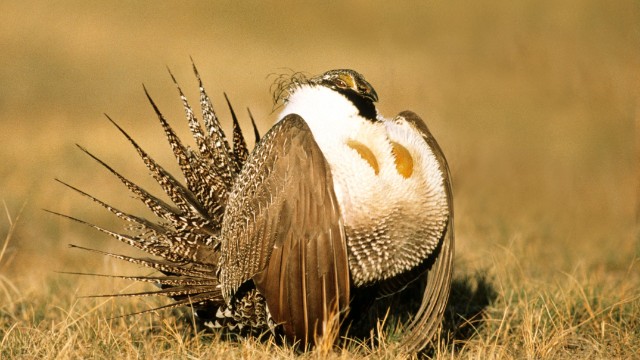
According to The New York Times, the new plan would reduce the bird's habitat to 1.8 million acres, and would make 9 million acres of land available for "drilling, mining and other development."
"The BLM recognizes the authority of the individual states in managing wildlife and that plans at the federal level for managing habitat should not be one-size-fits-all," said Heather Feeney, spokesperson for the Bureau of Land Management, in a statement.
Environmental groups were swift to criticize Interior Secretary Ryan Zinke and the department's proposed changes.
"It's hard to pretend at this point that Zinke is a steward of America's public lands: he acts more like a pillager," said Bobby McEnaney, senior director for the Western Renewable Energy Project at the Natural Resources Defense Council.
"This rolls back a conservation plan that was carefully crafted by states, ranchers, conservationists and public officials to protect this iconic western bird and the unique sagebrush landscape it inhabits," he added. "It has no basis in science -- it's a bald-faced giveaway to the oil and gas industry."
Similarly, Jesse Prentice-Dunn, policy director for the Center for Western Priorities, said "the Interior Department is punching oil rig-sized loopholes through the sage-grouse plans and preparing to gut the Endangered Species Act at the same time."
Although not specifically addressing the proposed amendments, Zinke released a statement on Thursday announcing that the US Geological Survey identified the largest continuous oil and gas reserve.
The Wolfcamp Shale and Bone Spring Formation in the Delaware Basin portion of the Permian Basin in Texas and New Mexico contain an estimated mean of 46.3 billion barrels of oil, the US Geological Survey said.
"Christmas came a few weeks early this year," Zinke said in a statement. "American strength flows from American energy, and as it turns out, we have a lot of American energy."
No comments:
Post a Comment